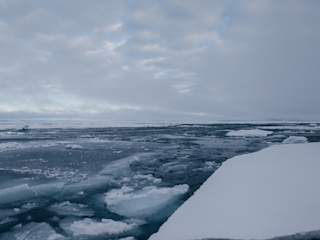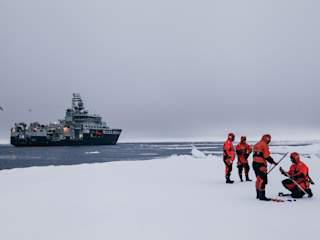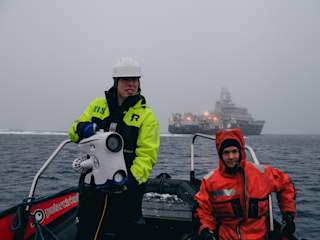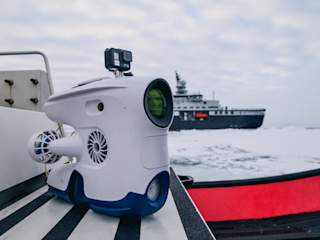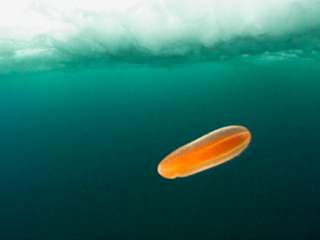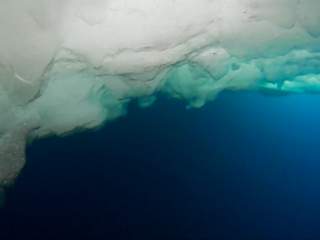In addition to co-founding Blueye Robotics, Martin Ludvigsen is a Professor and manager of the Applied Underwater Laboratory (AUR-Lab) at the Department of Marine Technology at NTNU. With a research team lead by Prof. Ilker Fer from the University of Bergen, Martin and the Blueye Pioneer joined the research vessel Kronprins Haakon to the North of Svalbard in the Barents Sea to understand more about the heat budget of the Arctic and how this information could provide important pointers to how our climate is changing.


The underwater drone served a purpose as providing an impression of the underside of the ice floes as the research vessel moved forward into the Arctic ice.
Using the drone we got a view of the morphology on the underside of the ice floes on which the University of Oslo put wave sensors - Martin Ludvigsen, NTNU
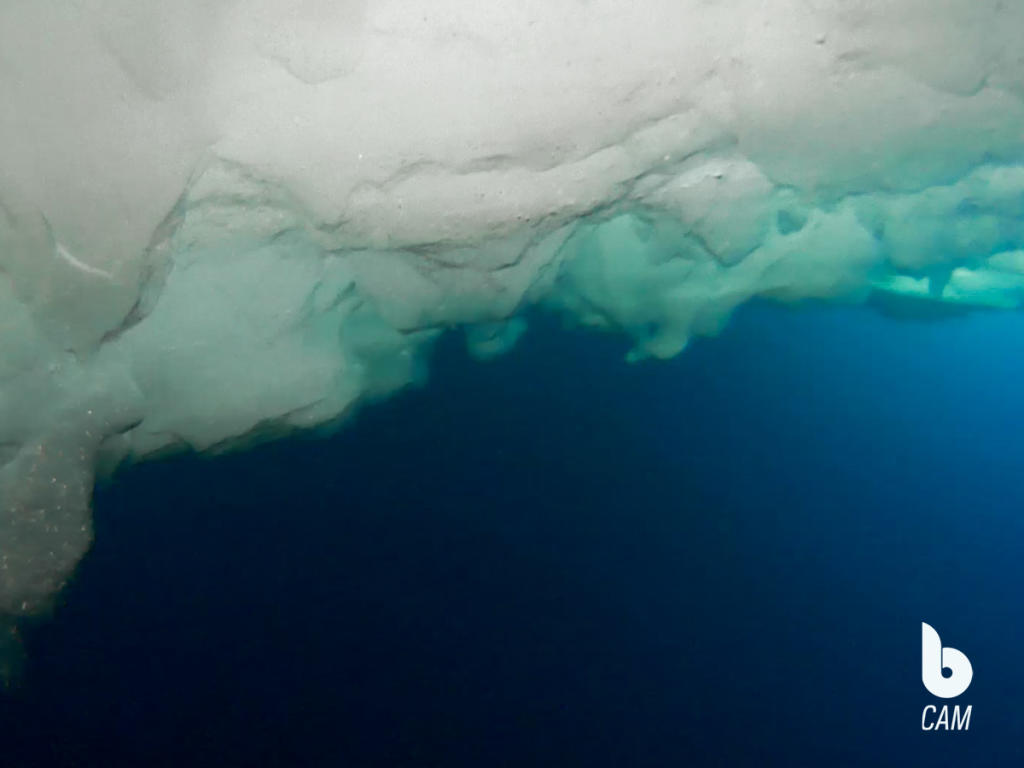
In addidion to observing the underside of the ice, the research team also both captured images of a wandering polar bear and a Comb Jelly (possibly a Beroe Cucumis).
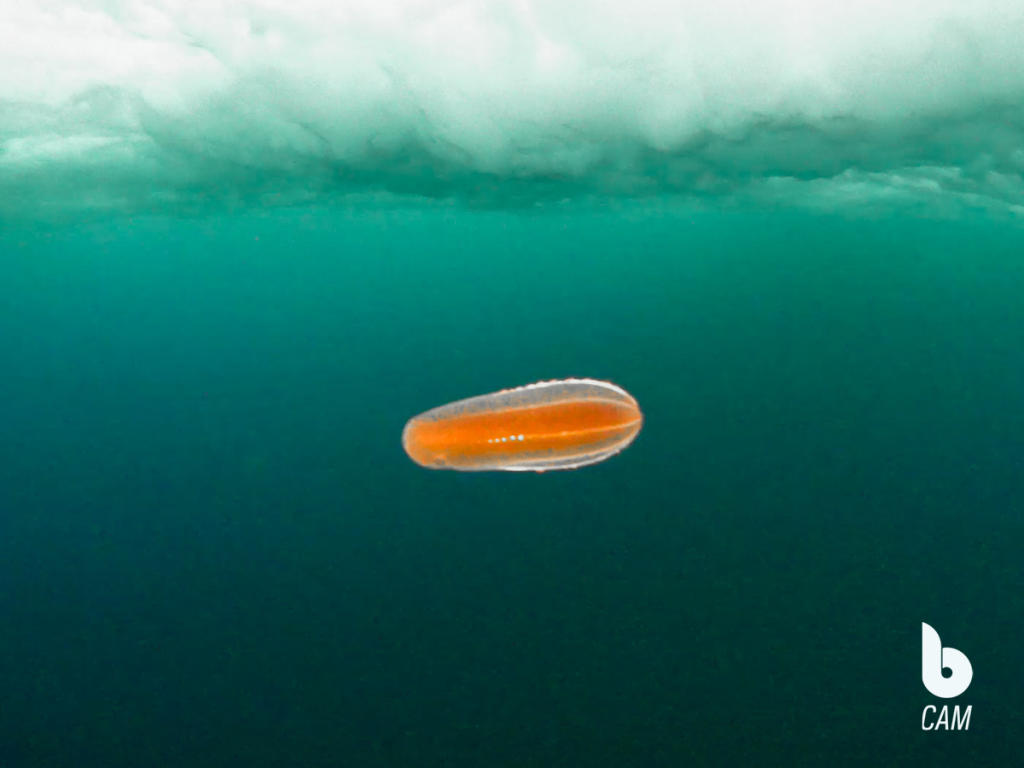
Using the Blueye Pioneer underwater drone for research below the surface gives researchers the possibility to stay in a fixed position or move slowly for thorough inspections, provide powerful LED lights when operating in dark waters, a battery life of 2 hours and records full HD video with easy transferring to you preferred device. The drone is also designed to handle both tropical and arctic waters.
Interested in reading more stories like this? We have also attended other research projects at e.g. Svalbard and Great Barrier Reef.

